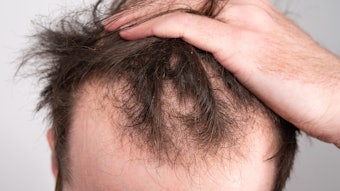
According to a new P&G patent application, "Circadian rhythms allow skin cells to anticipate changes in the environment that could potentially affect [them], and adapt accordingly." Properly functioning circadian rhythms support good health, and skin cells align with them to carry out functions at the optimal time.
For example, during the day, human circadian rhythms engage the skin to carry out various protective functions with regard to the environment. At night, they promote the skin to perform cellular renewal and metabolic synthesis processes.
It is well-known that skin care treatments can be formulated with ingredients for specified times of administration, e.g., night or day crèmes. It also is known that both circadian and biological rhythms are affected by the aging process. However, according to these inventors, there are currently no methods available for identifying new anti-aging cosmetic agents that synchronize with the circadian rhythm of the skin to maximize anti-aging efficacy. This was the focus of a new patent application.
Methods for identifying circadian rhythm-dependent cosmetic agents
WIPO Patent Application WO/2016/200905
Publication date: Dec. 15, 2016
Assignee: The Procter & Gamble Company
Disclosed herein are methods for screening cosmetic agents that work in sync with the circadian rhythm of skin to address the signs of aging. Potential ingredients are assessed for specific signature activities on skin cell types, such as keratinocytes or fibroblasts, through gene expression profiling and bioinformatics analysis. These unique gene signatures may serve as indicators of previously unidentified pathways associated with DNA repair, and could thus provide opportunities for identifying new classes of cosmetic agents.
According to one embodiment of the invention, the screening process comprises:
a) contacting a skin tissue sample with a cosmetic test agent;
b) generating a transcriptional profile for the skin tissue sample, wherein the profile comprises data related to the transcription of at least two genes selected from those outlined in the patent;
c) comparing the transcriptional profile for the skin tissue sample to a control transcriptional profile; and
d) identifying the cosmetic test agent as effective for providing a circadian rhythm-dependent, DNA repair benefit to human skin when the transcriptional profile for the skin tissue sample and the control transcriptional profile are concordant.










